
Bath vs Shower: The Key Differences to Consider in 2025
When comparing a shower vs bath, the differences go far beyond water temperature and timing—they reflect your lifestyle, space, and
You just purchased a lovely new house and are ready to relax and enjoy the fruits of your labor when you notice a few dark spots along the walls, floor and some of the tiles. You identify them clearly as water damage, and while water damage may sound minor, it can lead to some very problematic issues if not addressed properly.
Jump to section:
Water damage commonly appears in places that gather an overabundance of moisture. If you live in an area that sees a fair bit of frequent rainfall, then water damage will occur much more frequently as opposed to an area that sees less rainfall.
The three main types of water are ‘clean, gray and black water.
Your walls, floors, and basement are common places where moisture is typically absorbed, meaning these are areas that you will need to watch out for. The attic, (if you have one) may seem like another area of concern, but your roof, unless damaged, will prevent any excess water build up.
The most common cause of water damage headaches is drywall. Otherwise referred to as plasterboard, wallboard or gypsum board, drywall is a very common material used in the construction of homes. While the material is typically very sturdy, continual exposure to moisture will soften it, leading to increasing dampness and later structural damage if not removed.
Commonly constructed from the same material as your drywall, your ceiling will also tract moisture and go through similar problems as your walls will. Rainwater will drip downwards until it finds an area to continue its descent, which in the case of your ceiling will be any cracks or open crevices, leading the area to become saturated until it cracks and forms an actual leak.
Slightly different than your walls and ceiling, floor water damage isn’t usually caused by the rain. Often times this kind of water damage is the result of a leaky pipe or more commonly, water heater damage. You can easily identify floor water damage by visible physical signs that vary from material to material.
When hardwood is exposed to water for long periods of time, the planks of the flooring will buckle and bulge, meaning they are slowly separating from the floor, making them unstable and more dangerous to walk across them as time progresses. The water will also cause heavy discoloration in the wood, which is the beginning of mold which can lead to rot.
Similar to hardwood, laminate flooring will swell and bulge if exposed to moisture for too long. The material will warp, making it unstable and dangerous to walk across as the planks will no longer be flat and can flare up given the slightest hint of pressure. You will also see dark spots, indicating mold and mildew build up.
While it won’t warp like hardwood or laminate flooring, carpets are twice as susceptible to mold if spills or moisture is left untreated. If the water or liquid is not dried, the carpet will develop heavy odors and discoloration over time. In large quantities and prolonged exposure, mold is toxic, so take care.
Another problem area as water invariably always wants to travel downwards, meaning that the basement can track a fair bit of water and moisture if you aren’t careful. The biggest clue for your basement is usually odor. Your basement should be a stagnant area, so the air should be acrid or stale, which makes any change in odor suspect, meaning that moisture has been introduced into the environment. Also, in many homes, this is where the majority of your plumbing is kept along with your water heater, so always be sure to check both instances for any damage or leakage.
There are several signs of water damage in your home, but the three most apparent would be
Strong odors and smells are a clear sign of mold which permeates whenever there is an environment of high moisture and poor ventilation. If left untreated for long periods of time, the odors from the mold can be toxic and in many cases will cause long term health problems.
Discoloration is another sign of mold attraction as the composition of your material is absorbing a large degree of water and is weakening on a physical level.
Finally, the warped floors are a result of the water changing the composition of your floor, making the wood loose and structurally unsound, which makes it quite dangerous to walk around if left unresolved.
Generally, strong odors and smells are a bad sign. In this case, they are a clear sign of mold and mildew build up. With high moisture and poor air circulation, mold can easily sprout up in organic material such as wood-which is commonly what your house is made up of. So check your walls and see if you can spot a vortex like impression on the wall-this is mold, which if left untreated, will do great damage to your house.
Staining is the result of a substance mixing in with your material, changing the overall composition of it. In short, it means that water has seeped into either your floor or walls, breaking down the material and making it softer and more brittle. Aside from visual confirmation, if you touch drywall and it feels soft, then you know it has sustained some level of water damage.
Peeling or swelling paint is another sign of clear water damage. In this case, the water was seeping into the walls and is causing the material to expand, creating bubbles and separating the walls and the paint. Like staining, be on the lookout for any bubbles or peeling paint on your walled surfaces.
Similar to bubbling paint, sagging walls is another sign of water damage, as the water has damaged part of the foundation, causing it to sag. Ultimately this means that the foundation itself will be uneven, causing your wall to sag, eventually either collapsing or dragging another section of the wall with it. So, if you notice your walls seem warped or uneven, then you have water damage.
If your floor becomes uneven, it is a likely sign that water has begun to seep into your flooring, separating the material from the foundation of your home. Overtime, the water will cause your floor to warp, becoming uneven and unstable with additional pressure. This turns into bulges or cracks, and eventually deterioration if left untreated.
An often overlooked sign is the sound of running water. If your faucets are typically off-both in your shower and sinks, but you still hear the sound of running water in your home, this may be a clear sign that you have a leaky pipe somewhere. An increased water bill will usually reinforce this theory as it means you are expanding additional water than you are using. Aside from the water waste, this means that somewhere in your house is collecting the excess water, which invariably will lead to water damage down the line, so be mindful and aware.
Bathrooms are typically a haven for moisture. As many are not properly ventilated, moisture tends to bleed into the walls, floor, and ceiling quite easily.
In addition, with constant water flow provided by the sink, toilet and shower/bathtub, different quantities of water are being passed through your bathroom, each containing their individual toxicity levels that will impress into your bathroom if not properly cared for.
The most common places for water damage in your bathroom boil down to your bathtub and the floor tiles. Your bathtub and shower see a continual stream of water, and without ventilation, moisture will keep on its surface, leaking into the connecting caulk and sealant, damaging the area in the future.
This is why it’s important to ‘air’ out your bathroom after a shower. Second is your floor, which as discussed previously, will track water by being in a high moisture, poorly ventilated area.
While most floors are built with waterproof or sealed materials, the overall moisture in the area will wear down the sealant, especially if you have tiled flooring and seep inside causing water damage in the future.
The biggest factor to water damage in the bathroom overall is high moisture, low ventilation which creates mold. Mold can easily destroy and damage any wall or wood based material, so it is important to air out your bathroom constantly.
Commonly, for those without any home improvement knowledge, it is believed that there is nothing you can do about water damage until you consult a professional. Which is not true, as there are a few steps you can take by yourself before hiring a professional.
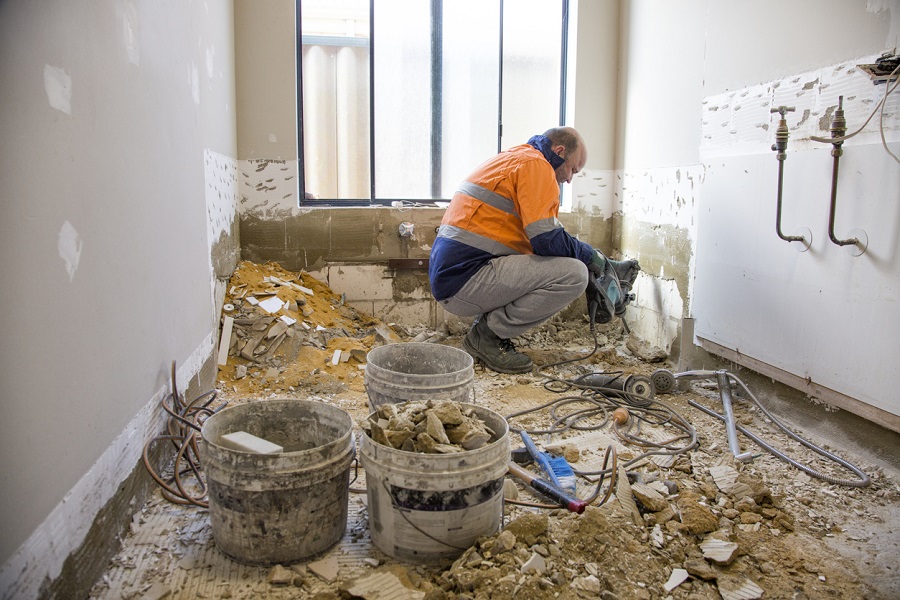
The first step you can take is removing any source of moisture from the problem area. For a leaky pipe, this means turning off the water, or if you have a carpet, you want to dry it out as much as possible, as standing water or moisture will cause more damage the longer it sits.
The largest problem for your walls and ceiling will be mold. Mold is toxic in large quantities and will lower your overall air quality on top of tearing through the integrity of your walls if untreated.
Similar to removing standing water, getting a large capacity dehumidifier or even a large fan can help by eliminating any access moisture in your area, which is crucial before working.
Regardless if you hire a professional or if you plan on DIY your repairs, you need to clean out your area before working, removing any obstructions that may hinder your path. If it’s a living room, you need to move any chairs or couches out of the way if it’s a bathroom, you should relocate your bathtub or toilet temporarily if you can. Before working, it is important to have a non obstructed work area.
The steps after applying to DIY repair if you wish to forgo professional help. It is highly advised that if you have little experience in this field to hire a professional as you are dealing with the structural integrity of your home. Inexperience can prove very dangerous if you are not careful.
Inspect your area for any porous material that may be damaged and remove all of it before continuing. After disposing of any damaged material left over, do a thorough sweep through the area with bleach or a cleaner solution to disinfect the area before continuing.
Starting with your ceiling first, you should replace your given material. Most often, this material would be wood. So remove any excess material left over and replace them with new ones. Be sure to check for any trapped moisture pockets before you finish installing your new material first. After your wood is installed, check your flooring for any trapped pockets and if that needs replacing, then it is best to strip it and replace the entire length as even a small pocket of damage can create larger problems down the road. Finally, you will finish with your drywall, which also can’t be replaced in small patches-the entire sheet needs to be replaced.
After replacing your materials, make sure everything is secure and slotted before caulking your wall and ceiling. Caulking will seal any cracks you have, preventing future water damage down the road. Afterward, paint it all over so that the repairs blend seamlessly with your home.
If you are able to catch water damage early, your costs will typically be much lower than if you wait.
If we are talking drywall or ceiling repair, you are looking to spend about 800-1,500 for DIY repair or just patch jobs, if the water damage is not too aggressive.
Retiling or replacing your floor, for example, can be anywhere from $2000-3,000 if you DIY some of the steps yourself.
However, if there is actual structural damage, your starting point is going to be around $5,000. This includes hiring contractors, and 5,000 dollars is on the low end. If your water damage is highly aggressive, you may need to replace large sections of your wall or ceiling, easily costing you around $25-30,000+ if you aren’t careful.
Of course, as with much of home repair, you can DIY certain steps, but it is highly advised that you consult a professional before undertaking any repair work.
Routing out water damage is important to the longevity of your home. If left untreated, you could be looking at tens of thousands of dollars in damage that otherwise could be a few hundred dollars instead. So please, take the time to inspect your home for water damage or hire a professional. Be proactive about taking care of your home, otherwise, you will be facing massive problems down the road.

Eric is the founder and president of Badeloft USA. He has been the president of Badeloft’s US division for over ten years and oversees all marketing and branding aspects of Badeloftusa.com.
His expertise lies in small business development, sales, and home and bathroom industry trends and information.
Contact us with any business related inquiries.
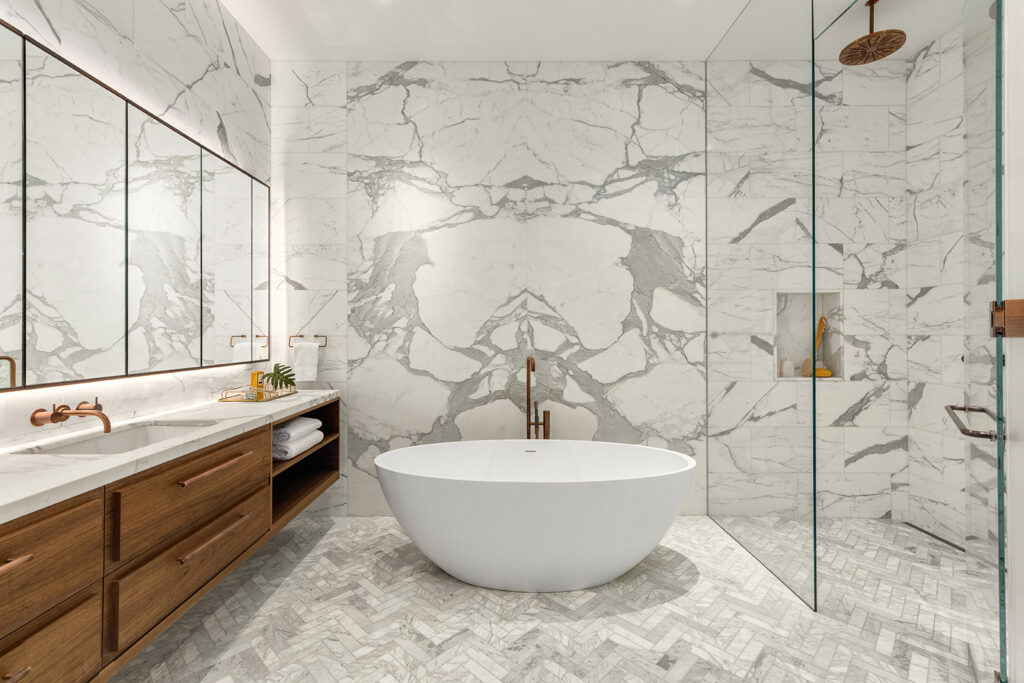
Free material samples and tub templates

When comparing a shower vs bath, the differences go far beyond water temperature and timing—they reflect your lifestyle, space, and
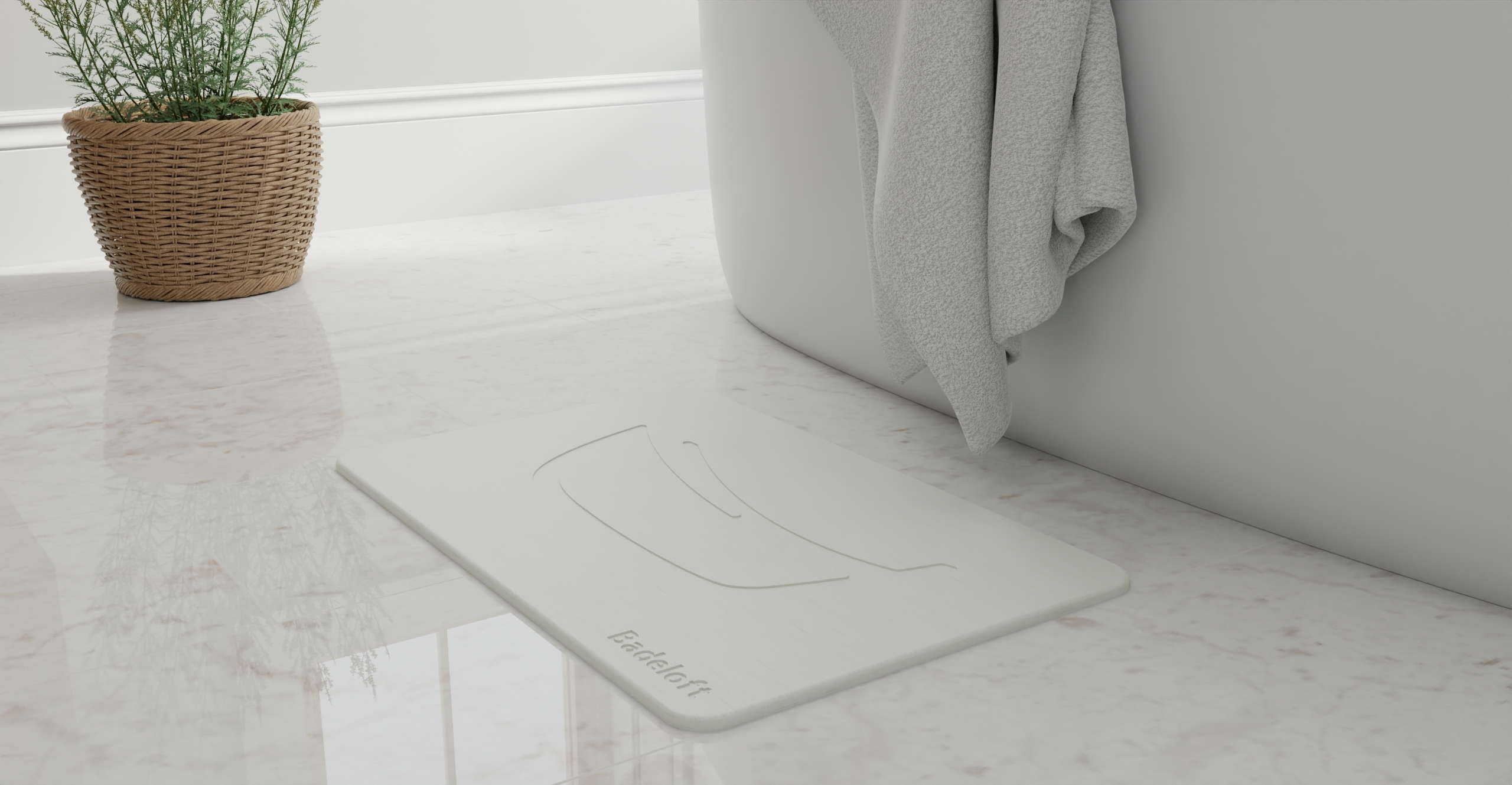
In 2025, bath mats are doing more than just soaking up water—they’re adding comfort, enhancing safety, and complementing the style
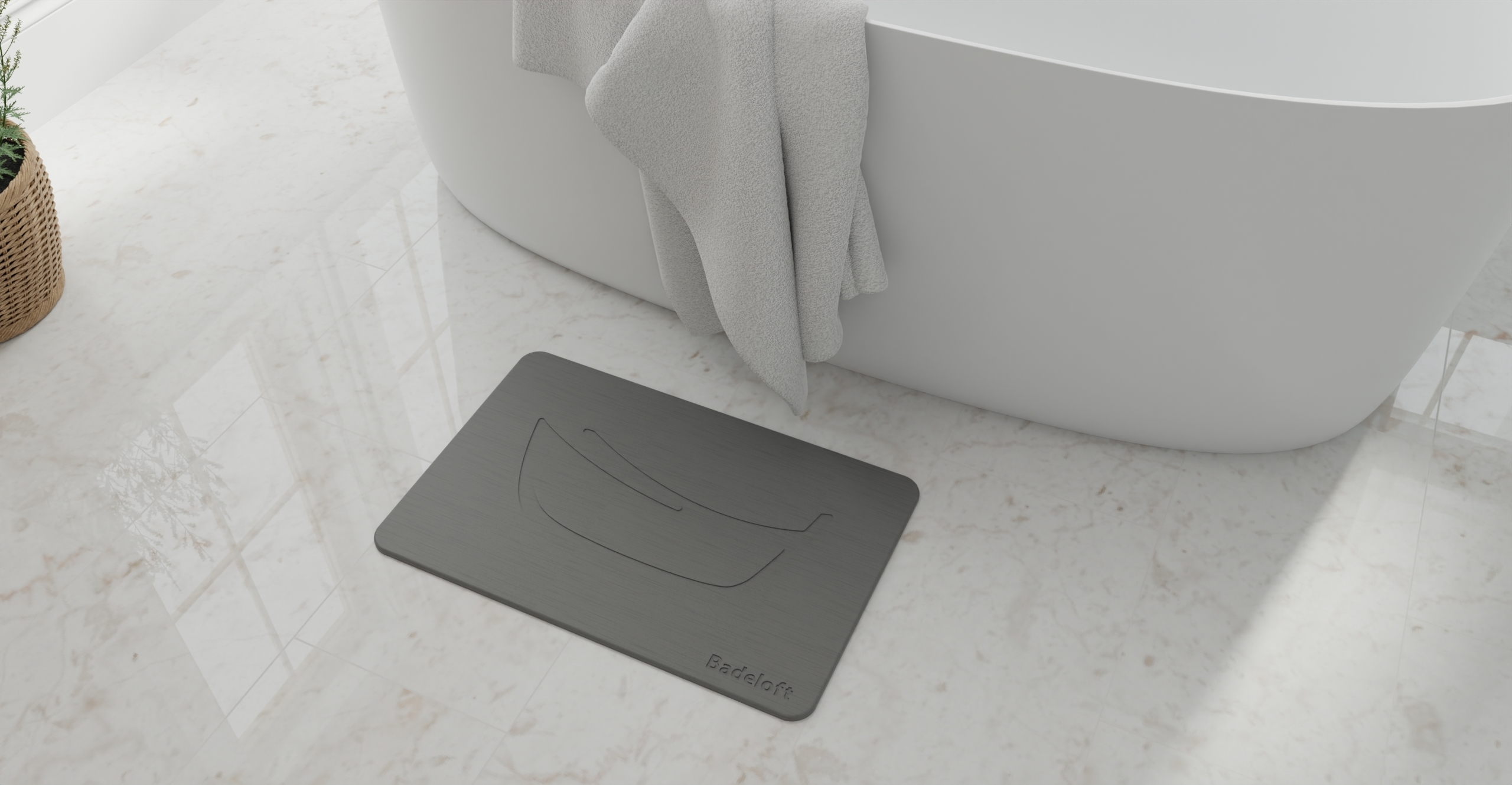
Bath mats may seem like a small detail, but their price can vary significantly based on material, size, brand, and
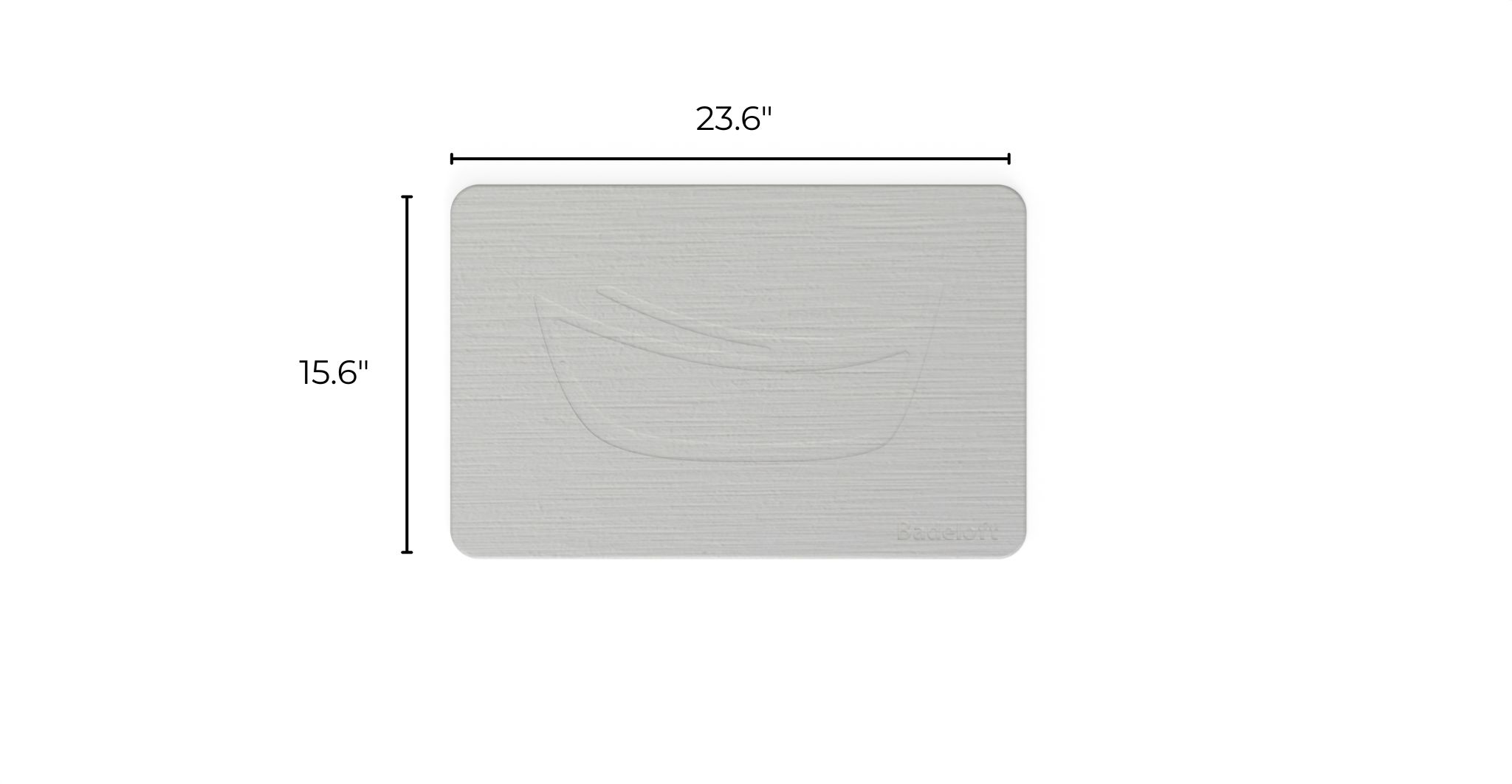
Choosing the right bath mat size is essential for both function and style. Whether you’re outfitting a compact powder room
Fill out the form below to request a free material sample
"*" indicates required fields
"*" indicates required fields
"*" indicates required fields
Thanks for helpful article. These are popular trouble for all home owners.